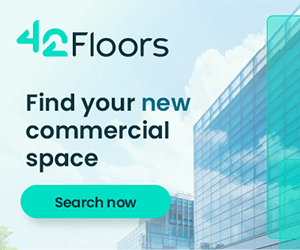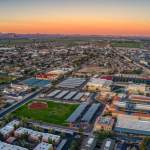Medical Office Building Decade Report: 52.7M Square Feet Added Across Top 25 Markets
Key Takeaways
- The top 25 medical office space markets in the U.S. grew 13% since 2012, adding more than 52.7 million square feet.
- Los Angeles, Dallas-Fort Worth & Houston were top medical office space markets — nearly one-quarter of all space added in the last decade were in these markets.
- Minneapolis-St. Paul’s medical office space market grew the most at 24%, adding 3 million square feet — almost as much as was added in Los Angeles.
- LA & Manhattan added the largest medical office buildings in the last 10 years at 820,000 and 750,000 square feet, respectively.
- New Jersey & San Antonio are set to deliver the largest medical office buildings of those currently in the pipeline.
Medical office buildings (MOBs) have proven to be a particularly resilient asset class within commercial real estate through the pandemic. That’s because most MOB tenants require these spaces to treat patients in person, thereby providing a more stable tenant base for the asset class. But even though this is a more stable asset class, there’s an undersupply of state-of-the-art medical office buildings. The buildings themselves are more complicated to operate than traditional office space — and even more complicated to build. But if CBRE’s recent announcement to expand its medical office building portfolio is any indication, investment in these facilities is growing.
So, using data provided by CRE research and listing platform CommercialEdge, we analyzed the last decade of medical office building construction activity — between 2012 and 2021 — to see how this asset class had blossomed into the spotlight for CRE investment firms. Specifically, we looked at 25 major commercial real estate markets, analyzing how deliveries and sales volumes in these markets had progressed throughout the last 10 years.
LA, Dallas & Houston Are Nation’s Top MOB Markets
The total MOB square footage across the top 25 medical office markets in the country topped 470 million in 2021, which is 13% larger than it was 10 years ago and represents an addition of more than 52.7 million square feet combined.
Los Angeles led the country for MOB square footage with more than 1,000 medical office buildings totaling more than 41 million square feet — far more than any other single market in the entire country. However, LA’s medical office market only grew 9% in the last decade — adding 3.48 million square feet and reaching a total 587 buildings.
Meanwhile, Texas’ two largest medical office space markets saw major growth in the medical office sector, as well: The second-largest MOB market in the country was Houston, which added 4.3 million square feet of medical office space in the last 10 years, growing 15% to its current total of 33.2 million square feet. Dallas-Fort Worth’s medical office market saw similar growth — adding 4.6 million square feet, growing 16% since 2012 to its current 33-million-square-foot medical office footprint.
MOB Growth Strongest in Twin Cities & Richmond-Tidewater
Notably, lower-tier markets with aging populations saw some of the most growth in the last 10 years — case in point: the Twin Cities. Minneapolis-St. Paul came in 15th for medical office space in the country with 231 buildings totaling 15.8 million square feet. However, the market has grown nearly 24% since 2012, adding 3 million square feet — almost as much medical square footage as was added in Los Angeles during the same period — as the 65 and older demographic makes up 17% of the population in Minneapolis and is projected to grow to more than 20% by 2038.
And, while Richmond-Tidewater was the 23rd-largest MOB market in the country by square footage, it, too, has grown rapidly in the last 10 years: Of Richmond-Tidewater’s 11.3 million square feet of medical office space, more than 2 million was built since 2012 — a market growth of 22%.
In the Midwest, Chicago’s medical office space market was comprised of 28.8 million square feet across 427 buildings — the fourth-largest MOB market in the country. The sprawling Windy City added more than 4.3 million square feet of medical office space in the last 10 years — growing nearly 18% since 2012.
LA & Manhattan Build Largest MOBs in Last 10 Years
While MOBs tend to be smaller than traditional office buildings, it doesn’t mean that they always are. For example, Cedars-Sinai Advanced Health Sciences Pavilion was the largest MOB to be completed in the last 10 years. Delivered in 2013, the 820,000-square-foot Los Angeles medical office building specializes in minimally invasive surgeries, sports medicine, joint replacements and orthopedics.
Across the country, the second- and third-largest MOB deliveries of the last decade were in East Coast markets — Manhattan and Philadelphia. First, the 750,000-square-foot, Upper East Side medical center — the David H. Koch Center for Cancer Care — stands 25 stories above FDR Drive and was completed in 2020. Next, the Buerger Center for Advanced Pediatric Care in Philadelphia was completed in 2015 and added 706,000 square feet of medical office space just south of the University of Pennsylvania.
Smaller MOB Markets Set to Deliver Larger Buildings
The pandemic highlighted the resilience of MOBs — as well as the undersupply of them — and construction of medical offices continues across the country. To that end, New Brunswick, N.J., will add 519,500 square feet of medical office space in a single building in Q1 2024 with the completion of the Jack and Sheryl Morris Cancer Center. Likewise, The Rock at La Cantera is set to be completed in Q3 of next year, adding 500,000 square feet of medical offices to San Antonio.
The next two years will also see three large deliveries across three Midwestern markets: Chicago; Madison, Wis.; and Milwaukee. These three buildings will collectively add more than 1.4 million square feet of state-of-the-art medical office space to the region. Overall, the combined total of the top 10 projects to be delivered by the end of 2024 will be nearly 4.4 million square feet of prime medical office space.
Expert Insights on Medical Office Buildings
We caught up with several industry experts to get their insights on the current state of the medical office market. Read their answers below:
Jennifer Carney – Principal and Partner at OHM Advisors
- In your opinion, are medical office buildings more complicated to build than traditional office buildings? Why?
” Medical office buildings are more complicated to build than traditional office buildings because the spaces you’re building are denser, i.e., there are more rooms in a medical office than in a traditional one. Medical office rooms tend to be smaller, too.
If you consider a traditional office building, offices are typically disbursed around open work areas.
In a medical office, the entire space — and the rooms within it — are primarily enclosed for privacy reasons. Additionally, these private patient rooms are equipped with sinks and a higher volume of cabinets for storage. These built-in fixtures within each room mean additional plumbing and materials are needed, adding to cost and labor demands. There are potentially more HVAC and electrical and structural needs to support equipment.
A traditional office setting typically uses a furniture solution, where desks, storage and tables and chairs are brought in by the tenant and not built into the structure like a medical office.”
- What are your thoughts on the current state of the medical office market?
“The current market is strong. Even with a struggling economy, healthcare rents continue to grow, and the demand is stronger than the supply. Healthcare organizations are under pressure with these rising costs, but our industry is seeing a movement in developing outpatient healthcare occupancies.
Additionally, we’re experiencing an aging population; people are living longer, contributing to care taking place in outpatient settings — such as ambulatory care and individual physician offices and surgery centers. Think of it this way: people go to the hospital when they’re critically ill or facing a life-threatening condition, e.g., a heart attack. If you’re going for your annual visit or a non-life-threatening issue, you’re heading toward an outpatient setting, such as your doctor’s office.
For these very reasons, our industry is seeing an increased demand for urgent care settings and outpatient surgery centers.
Additionally, even before COVID-19, there was an increase in designing and creating telehealth rooms, where the doctor can virtually visit with a patient in the privacy of their home. Physicians can use their exam and patient rooms for virtual appointments, but we’re seeing planning spaces for telehealth that are smaller in size and scope.
Healthcare is an ever-evolving industry, so it’s important to stay informed on the trends and needs of healthcare systems and individual physician offices.”
John Slavens – Partner at Baker Barrios Architects
- In your opinion, are medical office buildings more complicated to build than traditional office buildings? Why?
“Both medical and traditional office buildings should be designed to business occupancy standards, but there are additional factors to consider for a medical office building, especially as more procedures that were previously dedicated to a “hospital” or acute-care setting shift to outpatient facilities.
If a medical building is designed primarily for physician office space, the architect needs to resist the temptation to over-think or over-design the building beyond working with particular dimensions that are conducive to efficient healthcare interior designs. For example, a design for a medical office needs to provide sufficient floor-to-floor heights to accommodate potentially upgraded mechanical systems for particular healthcare modalities. The tenant improvements for standard medical office space are so inherently expensive, ranging from $125 to $140 per square foot on average, that the design team needs to be vigilant about controlling the building core and shell cost to keep overall costs within market rates.
Another factor to consider is the addition of ambulatory surgery centers or imaging centers, which can typically be located in standard medical office buildings. These bring additional costs to the project such as separate canopies, entrances, generators, etc., but those features can be treated as tenant improvements and do not necessarily make the building more “complicated” than a standard office building.”
- What are your thoughts on the current state of the medical office market?
“Currently, we are as busy as ever with the design of medical office buildings. Part is this is due to a back log that was created by projects that were “tabled” during COVID. But market demand continues to be strong given patient needs and, as mentioned, an increase in procedures previously handled in hospitals and acute-care facilities moving to outpatient settings, which is greatly influenced by technology. We are seeing some added stress to the market based on increased construction costs and interest rate increases, but those are temporary and the overall market for medical office/outpatient space will continue to grow.”
John Wilson – President of HSA PrimeCare
- In your opinion, are medical office buildings more complicated to build than traditional office buildings? Why?
“Design considerations for medical office buildings differ from a typical office building, especially regarding plumbing, gas lines, HVAC filtration requirements, back-up power, access points, and safe navigable paths for patients. The type of healthcare provided in the building will dictate design. For example, a diagnostics area may house an MRI which will require the appropriate floor-to-ceiling clearance as well as an access panel from the exterior for the equipment. Plumbing and sewer lines may need to accommodate a higher number of sinks and toilets in the building. Interior exam and counseling rooms must adhere to the HIPAA sound acoustic levels for doctor – patient confidentiality. Ambulatory Surgical Centers require a backup power source. Other features unique to MOBs include push button or automatic entry doors, ADA drop off and entry points for patients, and elevators sized for gurneys.”
- What are your thoughts on the current state of the medical office market?
“Traditionally, supply and demand in the medical office sector has maintained a healthy balance as new space is constructed on a build-to-suit rather than speculative basis. However, several economic uncertainties are causing practitioners and real estate developers to reevaluate projects. Those headwinds include rising interest rates, supply chain delays, higher material costs and more expensive debt. These higher costs are also pushing rents higher. At the same time hospitals and providers are dealing with increase labor costs and labor shortages.
On the investment front, buyers are paying more for debt, and sellers who want to sell are willing to come down on price to get deals done. There is still more cash pursuing fewer deals as healthcare is a stable, recession-resistant real estate investment. We’re coming out of a very hot market that has cooled in the third quarter and will continue to cool as we head into 2023. Some of those looking to sell may end up waiting maybe a year or so until prices and market dynamics stabilize.
As more healthcare services move to outpatient settings, new MOBs will continue to be in demand – some co-located with senior housing, retail and other complementary uses – and many will have larger footprints than their predecessors to offer a wider spectrum of care.”
Methodology
The markets featured in our report are the top 25 medical office space by total square footage in the U.S., according to data compiled by CommercialEdge.
Yearly square footage deliveries and property completion dates are per CommercialEdge data and only include medical office properties larger than 25,000 square feet. The completion date represents the completion of the building itself, not the date it opened to the public.
The latest data update was conducted on August 30, 2022.
While CommercialEdge attempts to ensure the timeliness and accuracy of all provided data, it cannot be guaranteed. Figures for expected deliveries is particularly subject to change as CommercialEdge compiles and ensures the accuracy of property completions.
| Market | Total Medical Office Square Footage | Total Square Feet Added | Percentage Growth |
|---|---|---|---|
| Los Angeles | 40,935,210 | 3,481,513 | 9.30% |
| Houston | 33,221,302 | 4,317,734 | 14.94% |
| Dallas - Fort Worth | 33,075,948 | 4,629,934 | 16.28% |
| Chicago | 28,828,690 | 4,313,303 | 17.59% |
| Washington, D.C. | 24,317,954 | 2,163,756 | 9.77% |
| Atlanta | 23,996,707 | 2,880,612 | 13.64% |
| Philadelphia | 23,243,961 | 4,026,839 | 20.95% |
| Phoenix | 21,442,725 | 1,850,572 | 9.45% |
| Denver | 19,651,630 | 2,444,197 | 14.20% |
| Seattle | 18,673,586 | 1,758,263 | 10.39% |
| Bay Area | 17,823,303 | 1,883,869 | 11.82% |
| New Jersey | 17,405,670 | 1,108,999 | 6.81% |
| Detroit | 17,265,426 | 816,728 | 4.97% |
| Boston | 16,785,431 | 1,392,549 | 9.05% |
| Minneapolis - St. Paul | 15,797,750 | 3,008,912 | 23.53% |
| Orange County | 13,473,949 | 851,141 | 6.74% |
| San Diego | 12,649,598 | 889,686 | 7.57% |
| Cleveland-Akron | 11,862,957 | 592,448 | 5.26% |
| Baltimore | 11,845,647 | 1,216,812 | 11.45% |
| Miami | 11,842,122 | 1,099,364 | 10.23% |
| Tampa | 11,545,540 | 1,772,901 | 18.14% |
| Indianapolis | 11,488,831 | 1,428,526 | 14.20% |
| Richmond-Tidewater | 11,277,665 | 2,012,593 | 21.72% |
| San Francisco | 11,133,850 | 1,511,806 | 15.71% |
| Bridgeport - New Haven | 11,096,775 | 1,258,839 | 12.80% |










